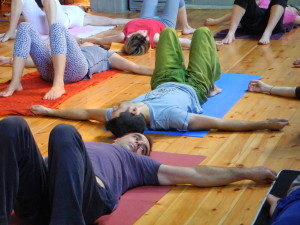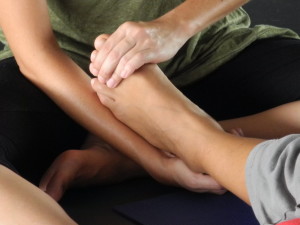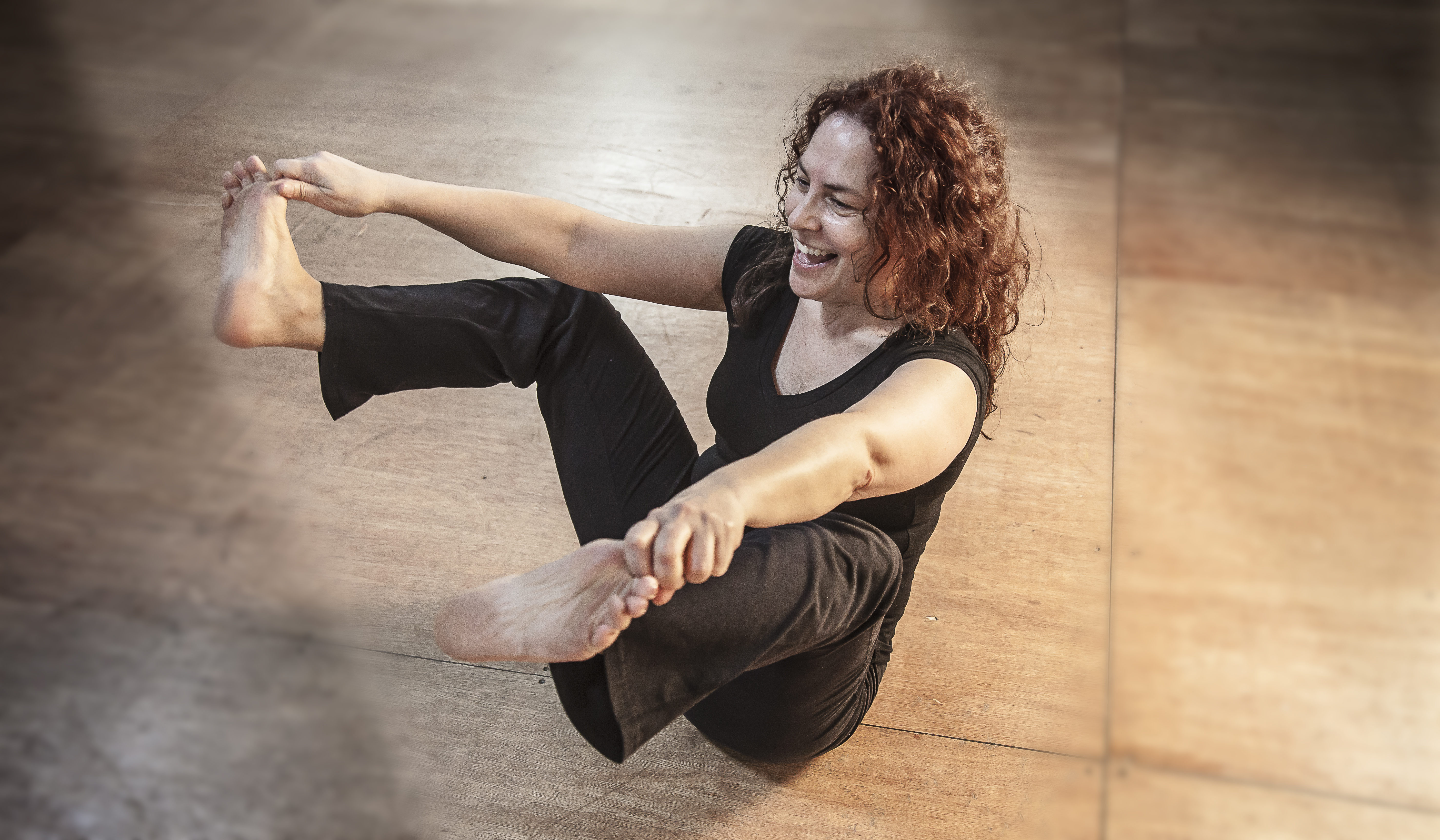A unique aspect of this method is that it can be practiced equally effectively in group classes called Awareness Through Movement and in individual lessons called Functional Integration.
Awareness through Movement
 In an Awareness through Movement lesson a Feldenkrais teacher verbally guides a group of students through structured sequences of functional movements. The student learns how the most basic functions are organized by discovering new ways of moving, sensing and feeling through an exploration of how one is using his whole self and organizes his body for movement. Although relaxation is a direct outcome of these lessons, the aim of these lessons is not relaxation but efficient and comfortable action.
In an Awareness through Movement lesson a Feldenkrais teacher verbally guides a group of students through structured sequences of functional movements. The student learns how the most basic functions are organized by discovering new ways of moving, sensing and feeling through an exploration of how one is using his whole self and organizes his body for movement. Although relaxation is a direct outcome of these lessons, the aim of these lessons is not relaxation but efficient and comfortable action.
This is achieved through guided attention, slow movement, variation in rhythm and differentiation.Through the use of these and other strategies there is a gradual reduction of effort which results in an increase sense of comfort, safety and pleasure which are essential for learning to take place. As the kinesthetic sensitivity of the student increases he learns how to mobilize hisintentions into actions efficiently.
The lessons are often based on developmental movements, like rolling, crawling or moving from lying to sitting; but they also explore complex performance skills.
Students are encouraged to learn at their own pace in a noncompetitive learning context. Lessons can have an instant surprising positive effect on our posture, breathing, walking, sitting and most of our everyday movements.
More than 1000 ATM lessons have been developed by Dr. M. Feldenkrais for this purpose.
Functional Integration
 Just as Feldenkrais practitioners can guide people through movement sequences verbally in Awareness Through Movement group classes can also guide people through movement in an non-verbal tactile way in Functional Integration individual lessons.
Just as Feldenkrais practitioners can guide people through movement sequences verbally in Awareness Through Movement group classes can also guide people through movement in an non-verbal tactile way in Functional Integration individual lessons.
Functional Integration, is a hands-on lesson where a teacher guides the student’s attention through the use of tactile sensory non-verbal communication.The gentle non-invasive precise touch allows the student to sense himself or herself internally rather than sensing the practitioner ‘working’ on him or trying to ‘fix’ him.
The teacher helps the student discover his or her habitual patterns and facilitates an exploration of different options and variations. The teacher guides the student through movement sequences to experience how the different parts of their body are connected and learn how to reorganize their body.
A Feldenkrais practitioner develops a lesson for the student, custom-tailored to the needs and desires of that particular person at that particular moment and explores individual functional solutions that fit him or her.
The effects range from easier, lighter, pain free self-use in every day actions to improving complex movement patterns.
Functional Integration lessons are usually performed with the student comfortably dressed, lying on a table designed specifically for the work. It can also be done with the student in sitting or standing positions. A variety of props like rollers and pillows are used often to facilitate the learning process.
